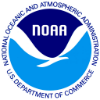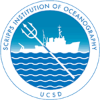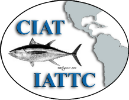Spatial Stock Assessment Models
The Center for the Advancement of Population Assessment Methodology (CAPAM) hosted a technical mini-workshop on the development of spatial stock assessment models at the Southwest Fisheries Science Center, La Jolla, CA, USA, October 1-5, 2018.
Most, if not all, fish populations exhibit spatial structure to some extent. The spatial structure could simply be in abundance, but often involves other characteristics such as life stage, size, or gender, or it could be factors such as fisheries processes (e.g. catchability) or population processes (e.g. growth, recruitment, natural mortality). The spatial structure will often be a consequence of movement processes (even if it is through larval dispersal e.g. in sessile organisms), habitat (e.g. bottom substrate or environmental conditions), or spatial distribution of fishing effort, and may change over time. Properly accounting for the spatio-temporal distribution of both fishing effort and fish abundance has been one of the largest sources of uncertainty ignored in most stock assessments, which typically assume a closed, well-mixed population. Of particular concern are changes in spatial distribution over time due to movement of the stock, recruitment dynamics, and/or local depletion. Substantial progress has been made in both the statistical methodology and the practical implementation (e.g. software) of spatial stock assessment models. However, there has not been a comprehensive evaluation of the methodology. Coordinated research and focused discussions among experienced researchers are needed to make the most of this modelling technique. The objective of the workshop was to bring together researchers to present and discuss the development and application of spatial stock assessments. The format of the workshop followed that of the successful CAPAM series (http://www.capamresearch.org/workshops) with a specialized technical focus and allowing ample time for presentations, questions, and discussion. The presentations and discussions will take three and a half days, with half a day tutorial on implementing spatial structure in Stock Synthesis (taught by Juan Valero, IATTC - ValeroMasPez Consulting) and one day dedicated to applying the methods to bigeye tuna in the eastern Pacific Ocean.
Topics (and Key notes) included in the workshop were defining spatial structure (Steve Cadrin, University of Massachusetts Dartmouth, USA), movement: data (Chi (Tim) Lam, University of Massachusetts Boston, USA) and theory (Andrew Hein, NMFS and University of California, Santa Cruz, USA), spatial stock assessment models (Andre Punt, University of Washington, USA), integrating tagging data (Dan Goethel, NMFS, USA), other information (Patrick Lehodey, Collecte Localisation Satellites, France), management implications (Aaron Berger, NMFS, USA), and applications (John Hampton, SPC, New Caledonia; Adam Langley, Trophia, New Zealand). Presentations relating to applications addressed general issues encountered when applying spatial stock assessment models. For information concerning the workshop and the Special Issue in Fisheries Research please contact the Chair Mark Maunder (mmaunder@iattc.org), and visit the CAPAM website (www.CAPAMresearch.org) for updated information.
Spatial Assessment Models Workshop 2nd Announcement


